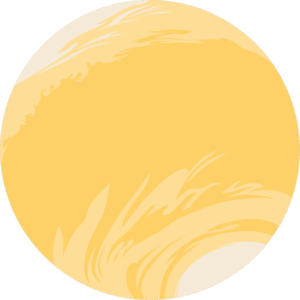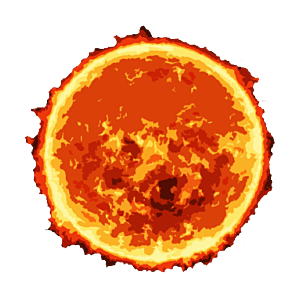The Downlink • Nov 05, 2021
It’s all about you
Space Snapshot

Despite its recent troubles (which you’ll read about below), NASA’s Hubble Space Telescope continues to dazzle us all with this recent image of a dying star. The red giant star, only 400 light-years from Earth, is collapsing on itself after running out of hydrogen in its core. Because the star was originally very massive, the pressure in its core is enough to fuse helium into carbon, which it then ejects into surrounding space. This carbon creates the distinct orange color surrounding the star, and provides material that could someday form planets. Image credit: ESA/Hubble et al.
You love space, now take action
This weekly newsletter is your toolkit to learn more about space, share information with your friends and family, and take direct action to support exploration. Anyone can subscribe at planetary.org/connect to receive it as a weekly email.
Mission Briefings


You can help Martian rovers without ever stepping off Earth. As part of a project called AI4Mars, NASA is asking citizen scientists to train an algorithm that will help identify areas of interest on the Red Planet. Participants will label features on images taken by Perseverance, which sends hundreds of pictures to Earth every day. Pictured: An image used by the AI4Mars project. Users outline and identify different rock and landscape features to help train an artificial intelligence algorithm that will help improve the capabilities of Mars rovers. Image credit: NASA/JPL-Caltech.

Hubble could remain in safe mode for another week. NASA said its engineers are troubleshooting the space telescope, which has been out of commission since October 25. Hubble had been showing error codes related to a loss of synchronization messages, which allow its instruments to function properly. This marks the third time this year that Hubble — which launched in 1990 — has faced a serious operational issue.

NASA’s Double Asteroid Redirection Test (DART) is one step closer to the launch pad. NASA recently confirmed that the spacecraft was in good health after being taken out of its container and fueled. DART’s team will spend the next few weeks making final preparations before it’s enclosed in a payload fairing and attached to a SpaceX Falcon 9 rocket. DART’s launch window opens on November 24.
From The Planetary Society


We want to hear from you! Cast your vote for the Best of 2021 to pick this year’s best moments in space exploration, most jaw-dropping space images, funniest space memes, and more. By telling us what you think, you can help celebrate an eventful year in science and exploration. Pictured: Two contenders in the Most Exciting Upcoming Mission category. Image credit: ESA/AOES/JAXA/NHK/The Planetary Society.

What’s on your space wish list? Every year The Planetary Society puts together a holiday gift guide featuring space-themed games, gear, gadgets, and more. This year we’re calling on you to help create the ultimate gift guide. Share your ideas for gifts and help make the holidays even more exciting for space enthusiasts everywhere.

If you like asteroids, you’re going to love the next few decades. Sarah Al Amiri, chair of the United Arab Emirates Space Agency, joins this week’s Planetary Radio to talk about the UAE’s ambitious new mission to seven main belt asteroids. Complementing NASA’s Lucy mission to the Trojan asteroids, this new endeavor will revolutionize our understanding of our solar system’s smallest planetary bodies and will pave the way for the future of the Arab world’s space sector.
What's Up

Venus is very bright in the western sky in the early evening. To its upper left, look for yellowish Saturn and bright Jupiter. In the predawn eastern sky look for Mercury and Mars very low to the horizon. Learn more at planetary.org/night-sky.
Take a Voyage Under the Stars

Do you want to see the night skies like never before? The Planetary Society is proud to partner with Betchart Tours on the upcoming tall ship Caribbean sailing adventure. Led by astronomer Dr. Tyler Nordgren, this week-long voyage takes passengers through Caribbean seas to explore islands by day and dark skies by night. Every booking helps support The Planetary Society’s mission to advance space science and exploration. Pictured: Nordgren under the night sky. Image credit: Tyler Nordgren.
Wow of the Week

Just like you, these peppers are made of star-stuff. But they’re extra special because they were grown completely off-planet. Astronauts on the International Space Station picked the station’s first crop of chili peppers as a part of the Plant Habitat-04 study, one of the most ambitious food-growing experiments ever conducted on the station. These particular peppers made their way into tacos for the ISS crew to enjoy. Image credit: NASA.
We love to feature space artwork in the Downlink. If you create any kind of space-related art, we invite you to send it to us by replying to any Downlink email or writing to [email protected]. Please let us know in your email if you’re a Planetary Society member!


 Explore Worlds
Explore Worlds Find Life
Find Life Defend Earth
Defend Earth


